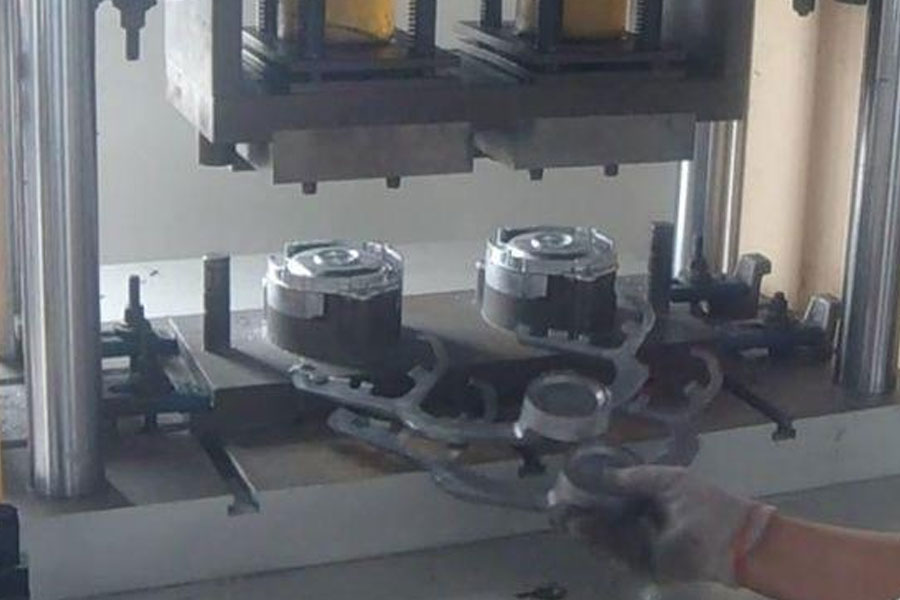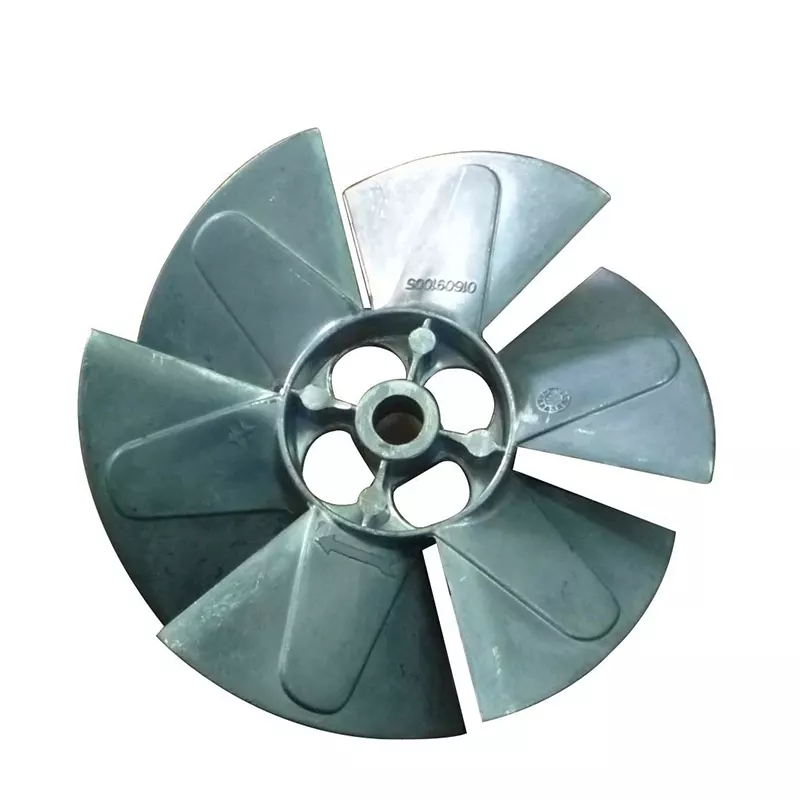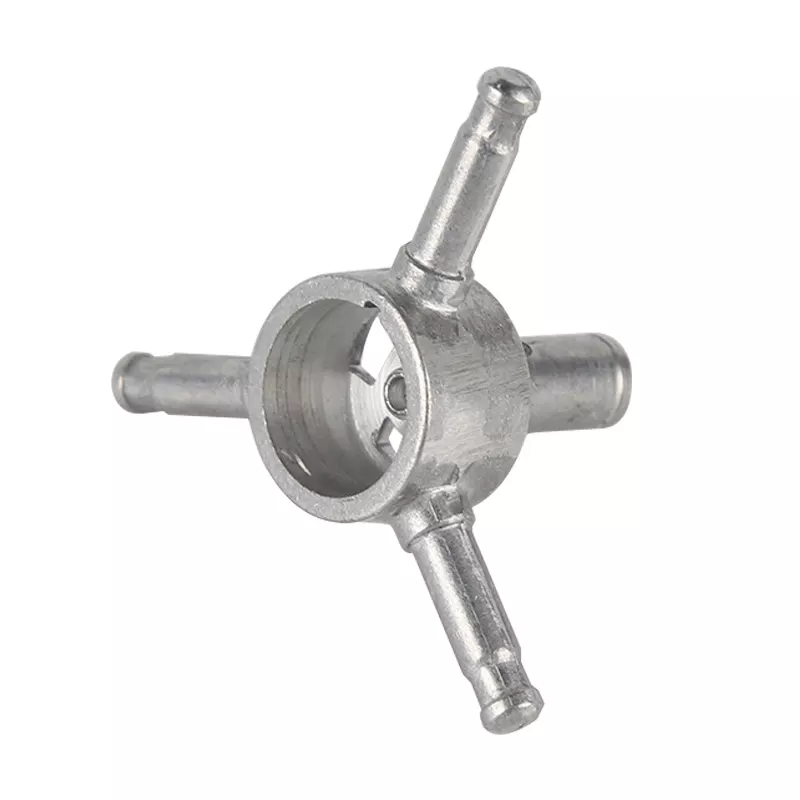1. The Basic Characteristics Of Aluminum Alloy
Japan ADCI2 aluminum-silicon alloy has good casting performance, and the casting has high strength, low thermal expansion coefficient, high corrosion resistance and good chipping performance. Therefore, it is widely used in the production of automotive carburetor, cylinder block, cylinder head, and locomotive reducer.

Vibrators, engine gearboxes, agricultural machinery gearboxes, camera bodies, power tool bodies and other parts. In recent years, with the rapid development of the automobile and motorcycle industries, they have been more widely used in the production of brake pump housings for small cars And motorcycle shock absorber shells and other mass-produced small and medium-sized parts with complex shapes and high strength precision.
In aluminum alloy ADC12 castings, the a-Al phase is the most important structure. In the as-cast state, the a-Al phase is dendritic and relatively coarse, and its orientation has no certain regularity and is rather messy, which makes its performance not very good. ; Si in the alloy is mainly used to improve casting performance, wear resistance, corrosion resistance and mechanical properties. Cu and Mg form CuAl2 and Mg2Si phases to strengthen the alloy, but if the content is too high, the plasticity will be reduced, and Cu can also increase High temperature performance, but it will reduce corrosion resistance; Mn mainly forms AIFeMnS phase, reduces the harmful effects of Fe impurities, and can improve the heat resistance of castings. Fe is generally regarded as the most harmful impurity element in Al alloys. The Fe phase is a-Fe phase (AlgSiFez) and B-Fe phase (AIsSiFe). The hard and brittle acicular β-Fe phase will destroy the connection strength of the metal matrix and greatly reduce the mechanical properties of the alloy (such as resistance Tensile strength), Fe in Al alloy as a harmful element will significantly reduce: the mechanical properties of the alloy, affect the fracture roughness and so on.
2.The Process Of Aluminum Alloy Raw Materials To Be Controlled
Nowadays, most of the die-casting industry purchase aluminum alloy ingots from aluminum alloy ingot production plants. The prepared aluminum alloy ingots of this type are mostly recycled secondary aluminum products as the main material, and the composition is adjusted (pure aluminum ingots and some intermediates are added). Alloy). Therefore, the cost and selling price of this alloy aluminum ingot are lower than those of pure aluminum ingot as the main material, but the content of impurities is higher. In view of this situation, it is necessary to inspect the chemical composition of the purchased alloy aluminum ingots, and make appropriate adjustments when signing the technical requirements with the alloy aluminum ingot manufacturer according to GB/T8733, and then make progress according to the requirements of die-casting aluminum alloy- Step adjustment. Due to the requirements of the gas content and hard points in the aluminum alloy, the aluminum ingot production plant must do refining, degassing, and slagging to prevent the high gas content and many impurities in the aluminum ingot from being inherited into the die-casting aluminum liquid. The aluminum ingot is required The surface is smooth (after the scum is removed), the fracture is fine and there is no bright crystal grain of crystalline silicon. The air bubbles on the surface of the aluminum ingot are because the paint on the ingot mold has a large amount of water and has not been dried. The surface is not bright because the scum has not been scraped off. The fracture of the aluminum ingot has bright crystal grains because the pouring temperature is too high and there are silicon crystals. In die-casting production, there are 30% to 60% of the recycled material. If the recycled material is oily, it must be burned and then pressed into the aluminum liquid. The crushed aluminum slag must be sieved and dusted, and sand and gravel must be removed before returning to the furnace. Where the recycled material is used The amount of molten aluminum, refining agent, and slag remover must be increased appropriately, and generally controlled according to the upper limit ratio. When smelting, the added aluminum ingot must be dry.
3. The Melting Of Aluminum Alloy
The smelting furnace used by the company is ATM-1500. The company requires that the smelting furnace must be baked every time the shift is opened in order to remove the moisture in the furnace, and the furnace after baking must meet the specified process requirements. During the smelting process, the smelting temperature is required: (680~750)C; the refining furnace temperature: (730+10) C. During the entire smelting process of aluminum alloy, the charge starts to melt when heated, realizing the transformation from solid to liquid. During this transformation process, the metal will be oxidized, burnt and get gas. The oxidation and burning of metal will not only affect the chemical composition of the alloy, but also the slag inclusion caused by the oxidation is one of the most harmful defects of aluminum alloy ingots. The inhalation of the metal will make the ingot too late or impossible during the solidification process. It escapes and exists in the ingot in the form of loose and pores. Therefore, the correctness of the aluminum alloy melting process is directly related to the quality of the melt. It not only affects its chemical composition, but also affects the quality of the ingot and even the final The quality of processed products is closely related. Aluminum is very active, except for inert gases, it reacts with almost all gases:
Moreover, these reactions are irreversible. Once reacted, the metal cannot be reduced, which causes the loss of the metal. Moreover, the products (oxides, carbides, etc.) entering the melt will contaminate the metal and cause defects in the internal structure of the ingot . Therefore, in the melting process of aluminum alloy alloys, there are strict selection of process equipment (such as furnace type, heating method, etc.), and strict selection and measures for the process flow, such as shortening the melting time and controlling the appropriate melting speed. Use flux to cover and so on.
Because hydrogen is a unit gas with a relatively simple structure, its atoms or molecules are very small, it is easier to dissolve in metals, and it is easy to diffuse rapidly at high temperatures. Therefore, hydrogen is a gas that is easily dissolved in metals.
The dissolution process of hydrogen in molten aluminum: physical adsorption-+ chemical adsorption →> diffusion
Hydrogen does not chemically react with aluminum but exists in the gaps of the crystal lattice in an ionic state, forming an interstitial solid solution. In the absence of an oxide film on the surface of the liquid metal, the diffusion rate of the gas into the metal is inversely proportional to the thickness of the metal, proportional to the square root of the gas pressure, and increases with increasing temperature
Where: v diffusion rate n-constant d-metal thickness E-activation energy p-gas partial pressure R-gas constant T-temperature K Therefore, before reaching the saturation solubility of the gas, the higher the melt temperature, the dissociation of hydrogen molecules The faster the speed, the faster the diffusion speed, so the higher the gas content in the melt.
Under production conditions, no matter what kind of smelting furnace is used to produce aluminum alloy, the melt is directly in contact with air, that is, with air
Oxygen in the gas is in contact with nitrogen. Aluminum is a relatively active metal. After it comes in contact with oxygen, it will inevitably produce strong oxidation to form alumina.
Once aluminum is oxidized, it becomes oxidized slag and becomes an irreversible loss. Alumina is a very stable solid substance, if mixed into the melt, it will become oxidized slag. Due to the high affinity of aluminum and oxygen, the reaction between oxygen and aluminum is very intense. However, the surface aluminum reacts with oxygen to produce Al2O3, and the molecular volume of Al2O is larger than that of aluminum, so the surface layer of aluminum is oxidized to form A12O; the film is dense, which can prevent oxygen atoms from diffusing inward through the oxide film At the same time, it can also prevent aluminum ions from diffusing outward, thus preventing further oxidation of aluminum.
4.Treatment Of Aluminum Alloy
The treatment of aluminum alloy mainly includes slag removal and refining.
5.Conclusion
Choosing a reasonable smelting process in the production process of die-casting aluminum alloy is the first step to obtain excellent die-casting product quality. Strict control of raw materials is a key step in smelting. At the same time, it is necessary to have a simple understanding of the effects of different elements in the alloy before smelting. Slag removal and refining are very important processes in the smelting process of aluminum alloys. Through theoretical research on slag removal and degassing, a suitable smelting process for our company has been obtained.









